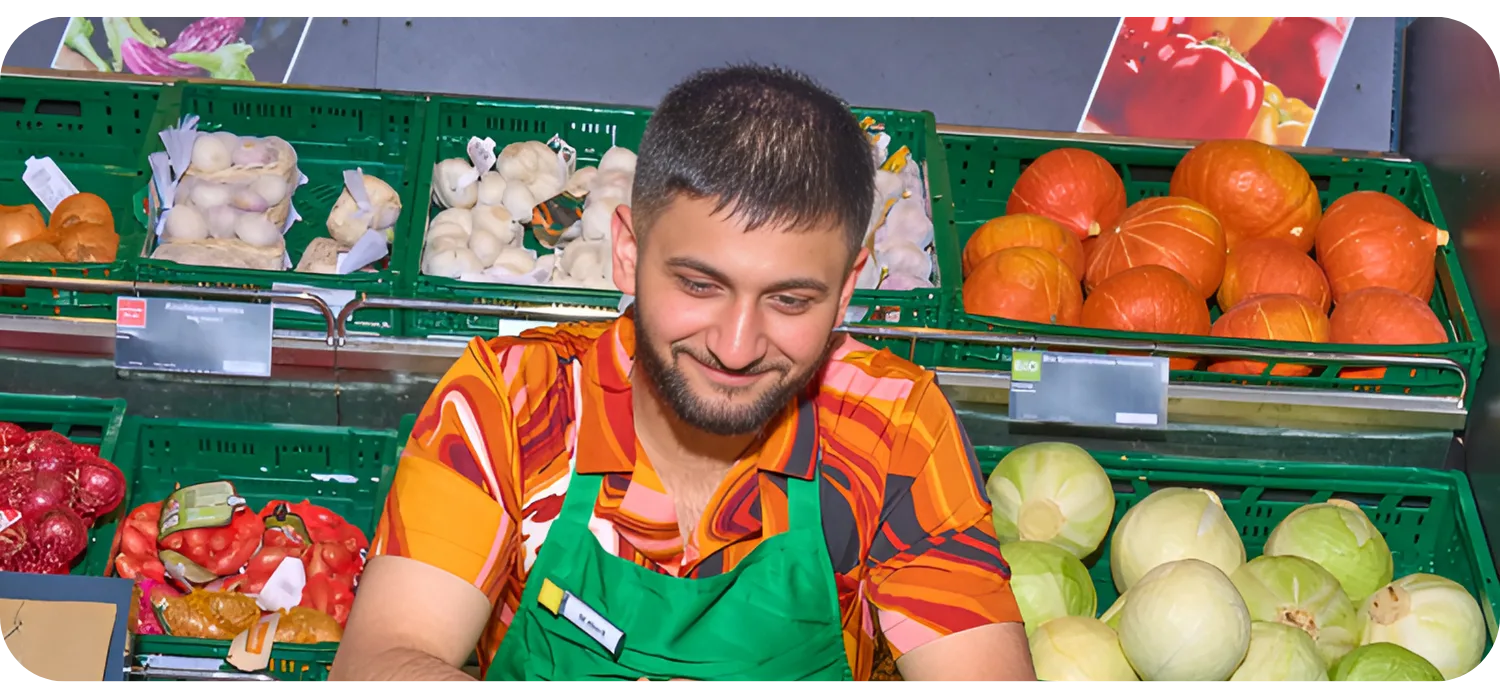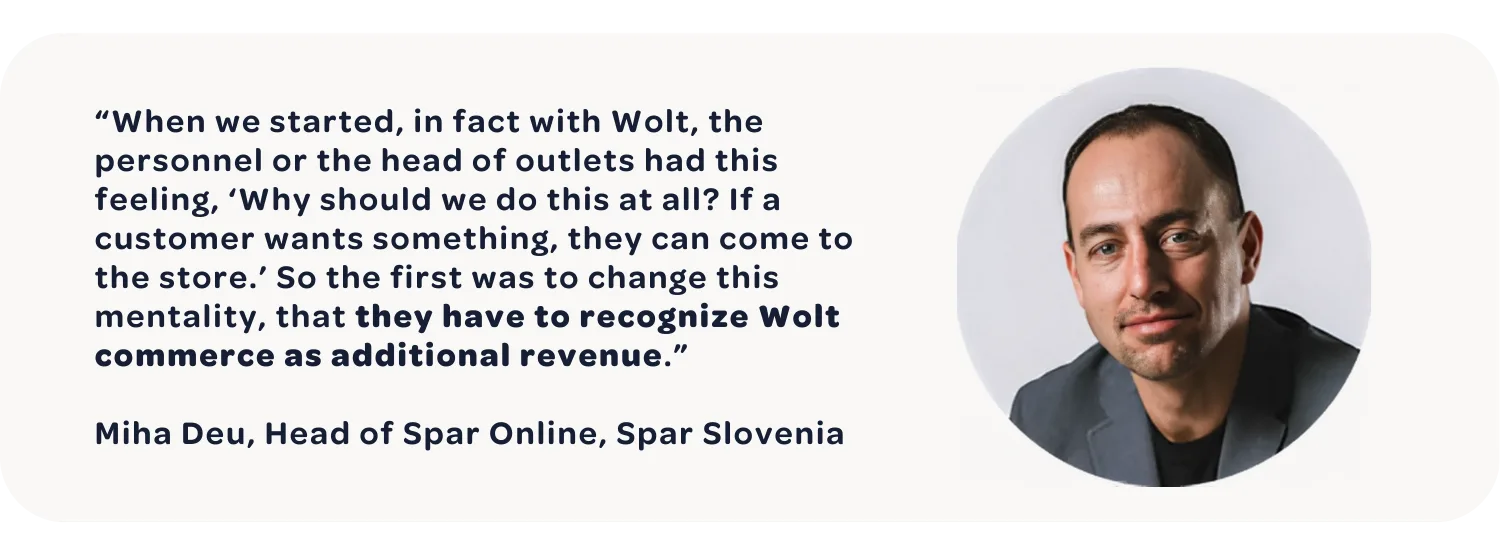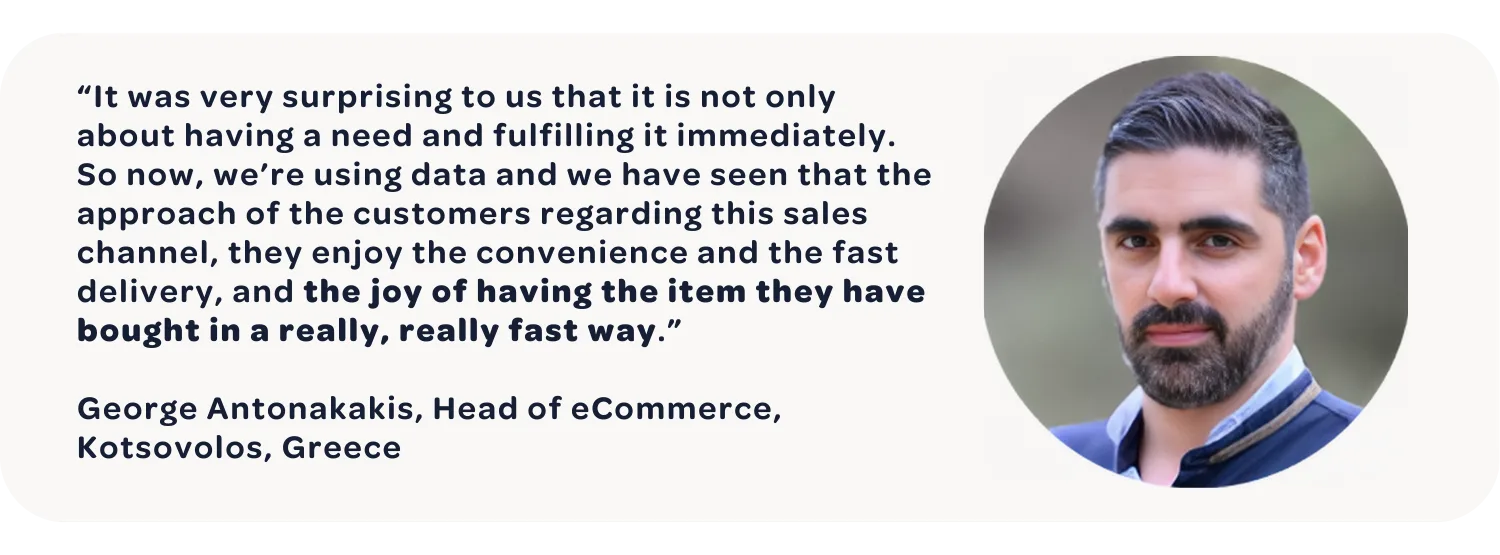In-store to online: 6 lessons from Wolt's Retail Merchant Panel
Retailers from across Europe share real-world lessons in Wolt’s first merchant panel. Get insights on growth, loyalty, and operations in the age of on-demand delivery.
⏰ 3 min read 🖊️ Bronwyn Hemus, B2B Content Marketing Team Lead

When the daily pace of retail feels like it’s speeding up by the minute, finding ways to serve customers better and faster becomes an absolute priority.
We live in a time of “I want it all, and I want it now,” so it goes without saying that convenience is king.
But implementing delivery solutions involves more than just uploading products online and hoping for the best.
That was the central focus of Wolt’s first Merchant Panel at the Retail Partner Summit in Finland.
Retailers from Greece, Slovenia, and Malta spoke openly about their challenges, triumphs, and what truly works when bringing a brick-and-mortar business into the on-demand delivery space.
Below, you’ll find 6 key takeaways from their candid conversation.
1. A mindset shift: Staff training and store “Champions”
For many retailers, the biggest hurdle in adopting on-demand delivery isn’t technology, it’s getting employee buy-in.
Employees may question the need for another sales channel if in-store business already seems steady. However, as Miha Deu from Spar Slovenia explains, changing this mindset is essential:

The panelists agreed that sharing early examples of revenue generated through Wolt can encourage teams to embrace online orders.
Another strategy is to appoint a “Wolt champion” in each store—an individual who oversees order picking, monitors stock, and handles any questions that arise. By having someone with a clear focus on delivery, the whole operation runs more smoothly.
What retailers can do
Designate a point person Select one or two people in each store who will manage Wolt orders, track inventory, and address any issues.
Show real results When staff see metrics or positive stories, they’re more likely to view online orders as an opportunity rather than an extra task.
2. Building (and updating) the right assortment
From deciding how many SKUs to list to learning which products will actually move online, data and experimentation are everything.
One electronics retailer discovered that it wasn’t just small accessories people wanted delivered—sometimes it was a PlayStation game they wanted in their hands within the hour.

Supermarket chains see similar trends in groceries. Some SKUs may be hyper-local (one store sells more of a certain brand than another), but ensuring broader uniformity across all stores can help prevent customer disappointment.
What retailers can do
Dig into your data Compare what sells online to what sells in-store. Look for surprise hits, like game consoles or niche groceries, that benefit from immediate delivery.
Keep an eye on local quirks If one region prefers a specific milk brand, make sure it’s always available for those online shoppers. Even small assortment changes can improve satisfaction.
3. Managing stock & operations: The art of picking
A smooth order fulfillment process depends on having staff who know exactly where to go and what to do when an online order comes in.
Some businesses rely on dedicated pickers, while others train employees to step into that role when needed. Either way, it helps to establish a specific path through the store, rather than wandering aisle to aisle.

Another best practice is to review stock levels daily. By spotting which items ran out the day before and addressing it as soon as possible, you prevent small oversights from becoming ongoing problems.
What retailers can do
Create a picking path Decide on the most logical route through your store, so staff fulfil orders quickly without crisscrossing aisles.
Consider a dedicated register If online orders stack up, set aside a separate checkout area for them. This keeps in-store lines moving while online orders are processed efficiently.
4. Making loyalty work in the digital space
Loyalty programs can be a powerful way to keep customers coming back—but only if you can link online sales data to your existing customer base.
It’s easy to assume your best in-store shoppers are also your most active online customers, but unless these systems speak to each other, you’ll never really know. As Miha Deu of Spar Slovenia explained:
“We have 800,000 Spar Plus loyalty members, and the population of Slovenia is a little bit more than 2 million, so that means every household has more than one member. What we are missing is that we don’t know who our Wolt customers are.”
When your loyalty data is siloed, you miss opportunities to offer meaningful perks like sending a reminder for someone’s favorite coffee or highlighting a limited-time discount on something they buy regularly.
By integrating your loyalty program with Wolt (where possible), you gain a more complete picture of how, when, and why people shop with you.
What retailers can do
Explore loyalty integration Find a practical way to link your loyalty system to online orders. Even a simple connection can help identify which members are ordering from Wolt.
Personalize offers Use shoppers’ purchase history to suggest products they might be running low on or deals on items they love. Subtle, relevant nudges can lead to more frequent visits both online and in-store.
5. Collaborative partnerships; Not ownership battles
One of the biggest worries for retailers who are new to third-party platforms is losing control over “their” customers.
As George Antonakakis from Kotsovolos put it, though, it’s not about who owns the customer, it’s about creating better experiences together.
“I think that no one owns the customer. We own some experience of the customers and we try to focus on providing the best experience to them.” George Antonakakis, Head of eCommerce, Kotsovolos, Greece
The best results come when both sides openly share insights like top-selling categories, online browsing behavior, and inventory levels to enhance the overall experience for the shopper.
What retailers can do
Team up with your platform Exchange insights on promotions, busy hours, and seasonal trends. Working together leads to smoother operations and happier shoppers.
Stay transparent If a delivery is late or an item is missing, tackle the issue together. It shows customers you stand behind your partnership and value their experience.
6. Incrementality: Are you cannibalizing sales?
A common fear about third-party delivery is that it might pull sales away from your physical store. However, several panelists saw the opposite happen once they added Wolt. As Miha Deu from Spar Slovenia explained:
“When the first store opened, the sales increased so much in the beginning, up to 7% extra revenue for that offline store. There was no marketing campaign in the history of Spar Slovenia that increased sales so much.” Miha Deu, Head of Spar Online, Spar Slovenia
Much of this lift comes from new customers who rarely visit in person, as well as existing customers who like the convenience of same-day delivery for full-basket orders—not just last-minute top-ups.
What retailers can do
Expand your online catalogue Offering more products online encourages larger orders and keeps shoppers from turning to competitors.
Stay flexible Track which items sell best online and adjust your inventory, promotions, and pricing based on what people actually want.
Building the future, one delivery at a time
Wolt’s first Merchant Panel in Finland showed that there’s no single recipe for success with on-demand delivery.
Instead, it’s about combining the right mindset, thoughtful use of data, solid in-store processes, and a true partnership approach. When you view delivery as an integral part of your brand you open new opportunities for growth and loyalty.
More than anything, these insights remind us that customers want speed and convenience, but they also want to feel valued.
If you’re ready to give your customers the convenience they crave, and discover what on-demand delivery can do for your store, this is just the beginning.
Not on Wolt? Let's get you started
At Wolt, we’re here to help you grow. Our platform gives you the tools, insights, and support you need to connect with more customers—on your terms. Let’s build something great together.